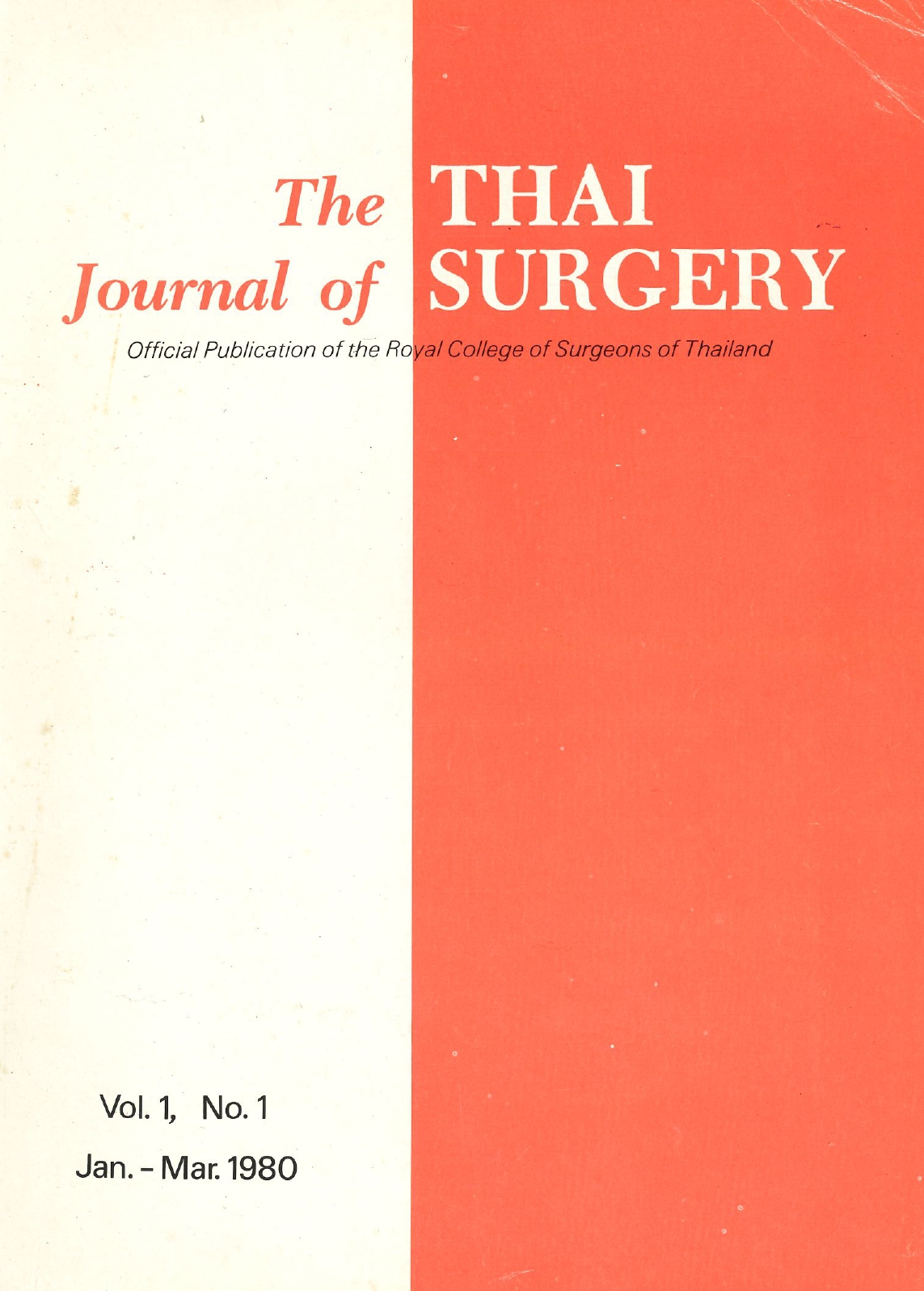Clinical Study for the Early Normalization of Children with Cleft Palates – A Preliminary Report
Abstract
Cleft lip and cleft palate are the most common congenital anomalies in the human second only to club foot. The incidence is about 1:500 of live births and they are reported to be most frequent among mongoloid populations14.
There is much disagreement concerning timing for surgical repair of the cleft palate patients. Most of the medical centers in North America recommend repair of cleft palate at the age of 12 to 18 months to prevent the development of false speech, but most of the centers in Europe prefer to delay surgery up to the age of 4-12 year or even later when the facial growth is adequate. The latter school gives the responsibility of correcting false speech to the speech therapist.
When a child with cleft lip and palate does not have the palate repaired surgically, there is abundant evidence that the face grows adequately2,7,10,13,18,20,24. The evidence is overwhelming that repair of the cleft palate by any of the popular surgical techniques will result in an inhibition of the growth of the mid-face5-8,11,12,15,16,22,23.
As a result of palatal surgery, a thick band of scar tissue frequently appears on either side of posterior palate inhibiting the sutural growth of bones-maxilla, palatine bone, and the pterygoid plates of the sphenoid, creating a condition which could be termed ''maxillary ankylosis”.
A second direct effect of palatal surgery is the distortion of dentoalveolar growth. Most techniques of palatoplasty leave an area of denuded bone close to the gum which is rapidly covered by scar tissue. The initial contraction of the tissue results in a medial movement of the maxillary segments and a medial tipping of the teeth and alveolar bone. As further tooth eruption and vertical development of the alveolar process occur, the area of scar tissue adjacent to the alveolar process resists growth and thereby induces a medial and posterior deflection of the dento-alveolar structures and the collapse of the dental arch.
The secondary effects of palatal surgery are associated with a large number of other factors of abnormal physiology which together cause a dramatic change in the posture and form of the mandible.
References
2. Atherton, JD: Morphology of Ficial Bones in Skull with Unoperated Unilateral Cleft Palate. Cleft Palate J 14:18-30, 1967.
3. Bjork, A: Sutural Growth of The Upper Face Studied by the Implant Method. Acta Odont. Scan 24:109-137, 1966.
4. Enlow, DH: The Human Face, New York. Hoeber, 1968.
5. Foster, TD: Maxillary Deformities in Repaired Cleft of the Lip and Palate. Br J Plastic Surg 15:182-190, 1962.
6. Graber, TM: The Congenital Cleft Palate Deformity. J Am Dent Assoc 48:375-395, 1954.
7. Hagerty, RF, and Hill, MJ: Facial Growth and Dentition in the Unoperated Cleft Palate. J Dent Res 42:412-421, 1963.
8. Hama, K: Morphological Study of the Craniofacial Skeleton within a Profile in Cleft Lip Palate. J Osaka Univ Dent School 4:41,67,1964.
9. Harvold, E: Cephalometric Roentgenography in the Study of Cleft Palate. S. Pruzansky (Ed). Congenital Anomalies of the Face and Associated Structures. Springfiled, ill, Charles C. Thomas 1959.
10. Herfert, O: Two-Stage Operation for Cleft Palate, Br J Plast Surg 16:37-45, 1963.
11. Herfert, O: Fundamental Investigations into Problems Related to Cleft Palate. Br J Plast Surg 11:97-105, 1958.
12. Hugg, JR, and Kremenak, CR: Growth of the Maxillae in Dogs after Palatal Surgery Studied with the Aid of Vital Staining (abstract). Am J Orthodont 54:930, 1968.
13. Innes, CO: Some Preliminary Observations on Unrepaired Harelip and Cleft Palates in Adult Members of the Dusan Tribes of North Borneo. Br J Plast Surg 15:173-181, 1962.
14. Ivy, RH: The Influences of Race on the Incidence of Certain Congenital Anomalies, Anomialies, Notably Cleft Lip-Palate. Plas Reconstr Surg 30:581, 1962.
15. Johnston, MC: Preliminary Investigation of Facial Growth Trends in Children with Different Types of Clefts. The Cleft Lip and Cleft Palate Research and Treatment Center. A Five-Year Report. Toronto. The Hosp for Sick Children, 1961.
16. Jolleys, A: A Review of the Results of Operations on Cleft Palate with Reference to Maxillary Growth and Speech Function. Br J Plast Surg 7:229-241, 1954.
17. Latham, RA, and Burston, WR: The Effect of Unilateral Cleft of the Lip and Palate on Maxillary Growth Pattern. Br J Plast Surg 17:10-17, 1964.
18. Mestre, J, De Jesus, J and Subtelny, JD: Unoperated Oral Clefts at Maturation. Angle Orthodont 30:78-85, 1960.
19. Narula, J and Ross, RB: Facial Growth in Children with Complete Bilateral Cleft Lip and Palate. Cleft Palate J 7:239-248, 1970.
20. Ortiz-Monasterio, F, Sevano, A, Barrera, G et al: A Study of Untreated Adult Cleft Palate Patients. Plast Reconstr Surg 38:36-41, 1966.
21. Scott, JH: Growth at Facial Suturs. Am J Orthodont 42:381-387,1956.
22. Shibisaki, Y and Ross, RB: Facial Growth in Children with Isolated Cleft Palate. Cleft Palate J 6:290-302, 1969.
23. Slaughter, WB and Brodie, AB: Facial Cleft and Their Management in View of Recent Research. Plast Reconstr Surg 4:311-332, 1949.
24. Van Lamborgh, J: Some Aspects of the Development of the Cleft Affected Face. R. Hotz (Ed). Treatment of Cleft Lip and Palate. Berne: Hans Huber, 1964.
Downloads
Published
How to Cite
Issue
Section
License
Articles must be contributed solely to The Thai Journal of Surgery and when published become the property of the Royal College of Surgeons of Thailand. The Royal College of Surgeons of Thailand reserves copyright on all published materials and such materials may not be reproduced in any form without the written permission.



